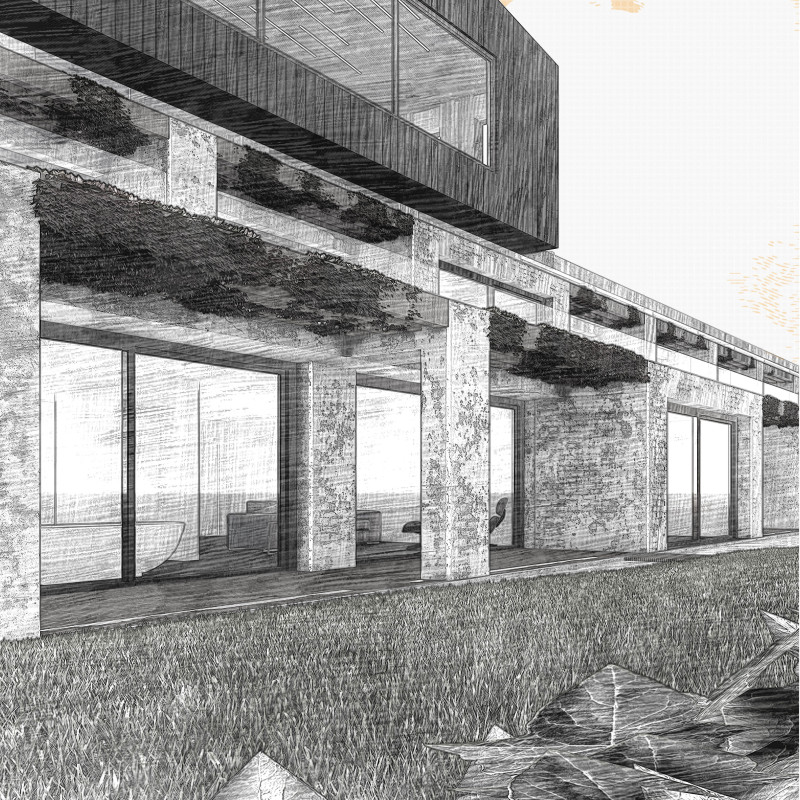5 key facts about this project
Spatial Organization and Design Function
The hotel consists of two main architectural blocks. One block is seamlessly integrated into the hillside and houses guest accommodations, while the other opens toward the vineyard, containing communal areas such as the reception, restaurant, and spa facilities. This organization supports the flow of movement and interaction among guests, ensuring that visitors can easily navigate from private spaces to shared amenities.
Guest rooms are intentionally designed to capture views of the vineyard, with large windows facilitating natural light and enhancing the connection to the landscape. The hotel also includes wellness facilities that prioritize relaxation, aligning with current trends in hospitality that emphasize health and well-being.
Unique Design Approaches
A unique design approach of the Golden Oak Wine Hotel lies in its material choices and sustainability initiatives. The project employs reclaimed wood as a primary structural element, reflecting the tradition of winemaking that emphasizes the use of natural resources. Stone and plaster are used throughout the lower levels, connecting the building visually and texturally to the earth and its agricultural heritage.
The integration of landscaping features, such as terraces and outdoor gardens, blurs the line between built and natural environments. Guests can engage with the vineyard through designed pathways and outdoor sitting areas that encourage a relationship with the surrounding landscape. The architecture seeks to provide a holistic experience, allowing guests to immerse themselves in the tranquility of their surroundings.
Architectural Details and Aesthetic Cohesion
The Golden Oak Wine Hotel is characterized by its attention to detail, from the arrangement of spaces to the selection of materials. The juxtaposition of stone and wood creates a dynamic aesthetic, while expansive glass facades foster an open and airy atmosphere throughout the hotel. The design resonates with the vineyard's characteristics, offering both a visual and experiential representation of the wine culture.
For those interested in learning more about the intricacies of the Golden Oak Wine Hotel, exploring the architectural plans, sections, and design elements will provide further insights into its thoughtful design approaches and functions. Take a closer look at how this project stands out in contemporary architecture through its unique integration with the landscape and focus on guest experience.


























